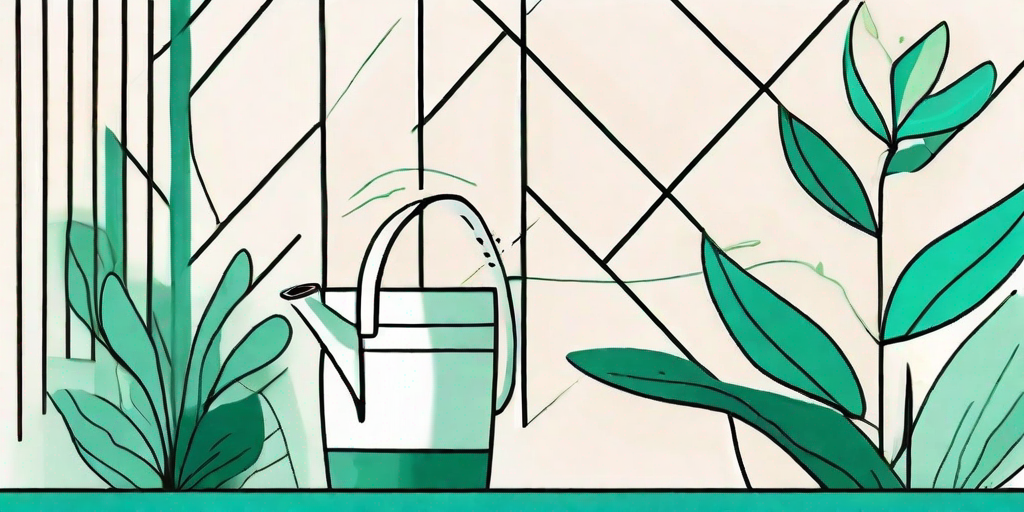
Ah, the rubber plant. A majestic creature of the botanical world, known for its glossy, dark green leaves and its ability to grow taller than your average NBA player. But alas, like all living things, it too has its moments of weakness. One of the most common problems faced by rubber plant owners is the dreaded leaf drop. But fret not, my green-thumbed friends, for this is a problem that can be solved with a little knowledge and a dash of TLC.
Understanding Your Rubber Plant
What is a Rubber Plant?
First things first, let's get to know our subject a little better. The rubber plant, or Ficus elastica, is a popular houseplant native to the tropical regions of India and Malaysia. It's known for its large, glossy leaves that can range in color from dark green to burgundy. And no, it doesn't produce rubber, despite its name. That's a common misconception, much like the idea that watching reality TV improves your IQ.
What the rubber plant does produce, however, is a milky white latex. This latex can cause skin irritation, so it's best to keep your plant out of reach of curious pets and children. Or adults who can't resist poking things, for that matter.
Why Do Rubber Plants Drop Their Leaves?
Leaf drop in rubber plants can be caused by a variety of factors, including overwatering, underwatering, temperature fluctuations, and low light levels. It's like the plant version of a mid-life crisis, except instead of buying a sports car, the plant sheds its leaves.
But don't despair, dear reader. While it may seem like your rubber plant is on a one-way trip to the compost heap, there's still hope. With the right care and attention, you can nurse your plant back to health and prevent future leaf drop.
How to Save Your Rubber Plant
Adjust Your Watering Habits
Watering is a bit of a Goldilocks situation. Too much, and your plant will drown. Too little, and it'll dry up. What you want is just right. A good rule of thumb is to let the top inch of soil dry out before watering again. And remember, it's better to underwater than overwater. Your rubber plant isn't a fish, after all.
When you do water, do so thoroughly. Give your plant a good drink, but make sure it's not sitting in water. If your plant pot has a saucer, empty it after watering. Your rubber plant likes to stay hydrated, but it doesn't want to go swimming.
Check the Light Levels
Rubber plants love light, but not too much direct sunlight. Think of them as the vampires of the plant world, minus the blood-sucking part. A bright, indirect light is ideal. If your plant's leaves are dropping and it's sitting in a dark corner, it might be time to move it to a brighter spot.
But be careful not to expose it to too much direct sunlight, as this can scorch the leaves. If you notice the leaves turning yellow or brown, it might be getting too much sun. In that case, move it to a spot with less direct light.
Additional Care Tips
Temperature and Humidity
Rubber plants prefer temperatures between 60 and 75 degrees Fahrenheit. They're not fans of sudden temperature changes, so try to keep them away from drafty windows or doors. And remember, they're tropical plants, so they like a bit of humidity. If your home is dry, consider using a humidifier or placing a tray of water near the plant to increase humidity levels.
Also, be sure to keep your plant away from heat sources like radiators or fireplaces. These can dry out the plant and cause leaf drop. It's like putting a cactus in the Arctic - it's not going to end well.
Pruning and Cleaning
Pruning your rubber plant can help promote new growth and keep it looking its best. Don't be afraid to give it a little trim every now and then. Just make sure to use sharp, clean shears to avoid damaging the plant or spreading disease.
And don't forget to clean the leaves. Dust can accumulate on the large, glossy leaves, blocking light and reducing the plant's ability to photosynthesize. Simply wipe the leaves with a damp cloth every few weeks to keep them clean and shiny.
Frequently Asked Questions
Why are the leaves on my rubber plant turning yellow?
Yellow leaves can be a sign of overwatering. Check the soil - if it's soggy, you might be giving your plant too much water. Cut back on watering and see if the condition improves.
Can I propagate my rubber plant?
Absolutely! Rubber plants are relatively easy to propagate. Simply cut a leaf with an inch of stem, dip it in rooting hormone, and plant it in a pot with well-draining soil. Keep the soil moist and wait for roots to develop. It's like making a clone, but without the ethical dilemmas.
Is my rubber plant toxic to pets?
Yes, rubber plants can be toxic to pets if ingested. The milky latex can cause irritation and vomiting. It's best to keep your plant out of reach of your furry friends.
So there you have it, folks. With a little care and attention, you can stop those leaves from dropping and keep your rubber plant looking its best. Remember, plants are like people - they need the right conditions to thrive. Treat your rubber plant well, and it'll reward you with years of beauty and growth.















